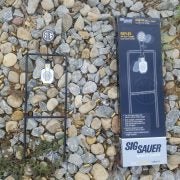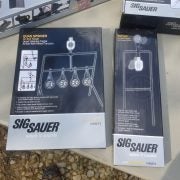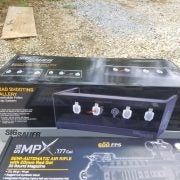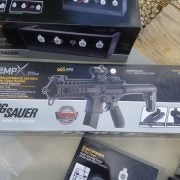Typically, firearms companies tend to shy away from air rifles and likewise, air rifle companies don’t take up explosive projectiles. The reasoning varies from completely different markets, legal implications, to the actual significant technical differences between the two propellant modes. Regardless, seeing cross-over is rare.
As such, it came as quite the surprise to many in both worlds when Sig Sauer didn’t just work to bridge to divide with a product or two, but decided to go full-tilt into the air rifle world. The German / New Hampshire company has released products across an entire swath of the airgun world including targets, ammunition, pistols, and rifles. Further, almost all of the airgun offerings are semi-automatic, which is a mean engineering feat considering the lower pressures at play to cycle actions.
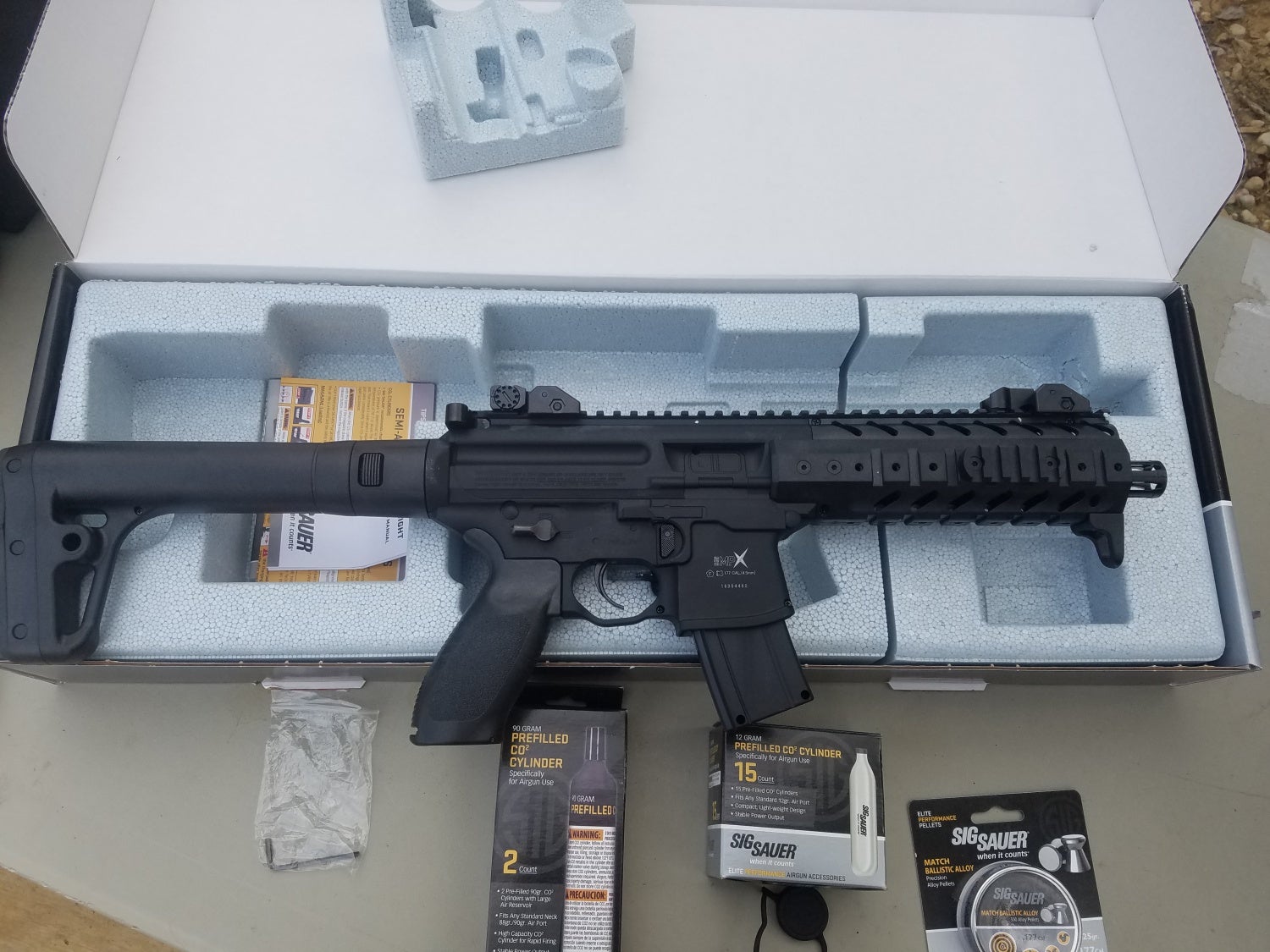
Enter the MPX
Released to much fanfare and continuing to push performance limits, the Sig MPX is an AR-inspired pistol caliber carbine. Fed from double-stack 30 round mags the rifle and its pistol cousins are non-blowback semi-automatic carbines ideal for competition, home defense, and general plinking/utility. Simply put, is a good gun, with good performance, and good reviews.
Thus, it makes sense that Sig would find the MPX as a solid baseline for its air rifle line. The firearm would help sell the air rifle and those buying the air rifle first would look to upgrade to a familiar platform, or so I posit. Plus, the MPX just oozes “cool”.
The MPX ASP Red Dot
Like its explosively-powered cousin, the MPX ASP is a semi-automatic weapon. Rather than use cartridges, it uses a rotary-style belt contained within the magazine body to let the shooter put no less (and no more) than 30 rounds per loading. The controls mimic the real-steel MPX, if only in placement. Only the charging handle and safety/selector are truly mimicking. The magazine release is single-sided and there is no bolt catch or release function.
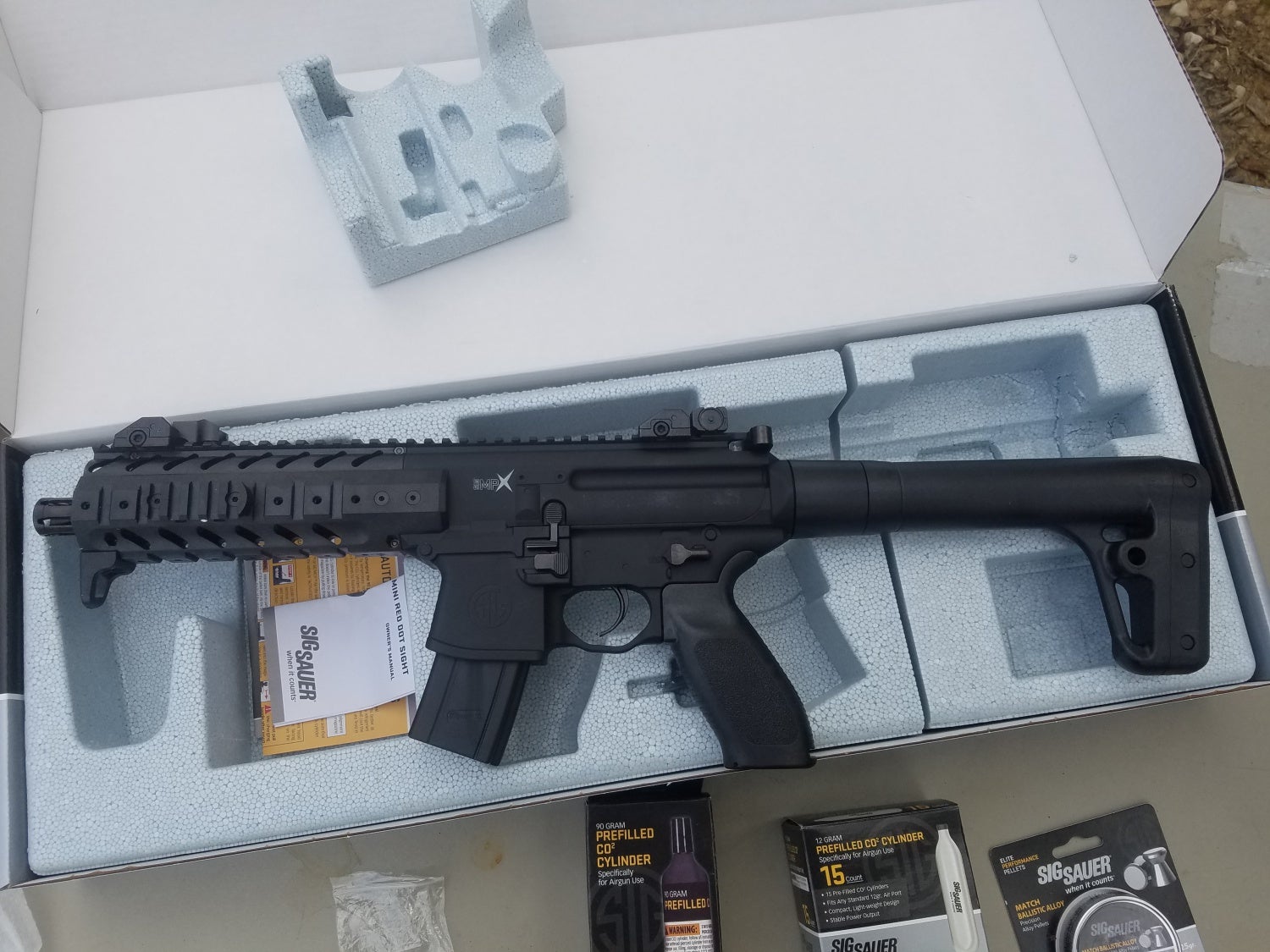
Available models include the basic ASP, which is a pistol-style configuration (as they are air rifles and not “firearms” the weapons can be configured as Sig desires with no NFA implications) to a full-length model including 1-4x optic and a “suppressor” mounted in both black and tan. For my review, Sig sent out “short” version with red-dot.
Included in the box were the rifle, a single magazine, iron sights, and the red-dot. As a bonus, Sig also included some of their fun air rifle plinking targets (which were awesome, but not the subject of review — for air rifle shooters, check them out). The normal manual, warnings, liability disclosures, and product literature was also present, read through briefly, and true to my nature – discarded. To get me up and running, Sig also threw in a couple of the CO2 cannisters and some ammunition. All in all, a plinking-ready package.
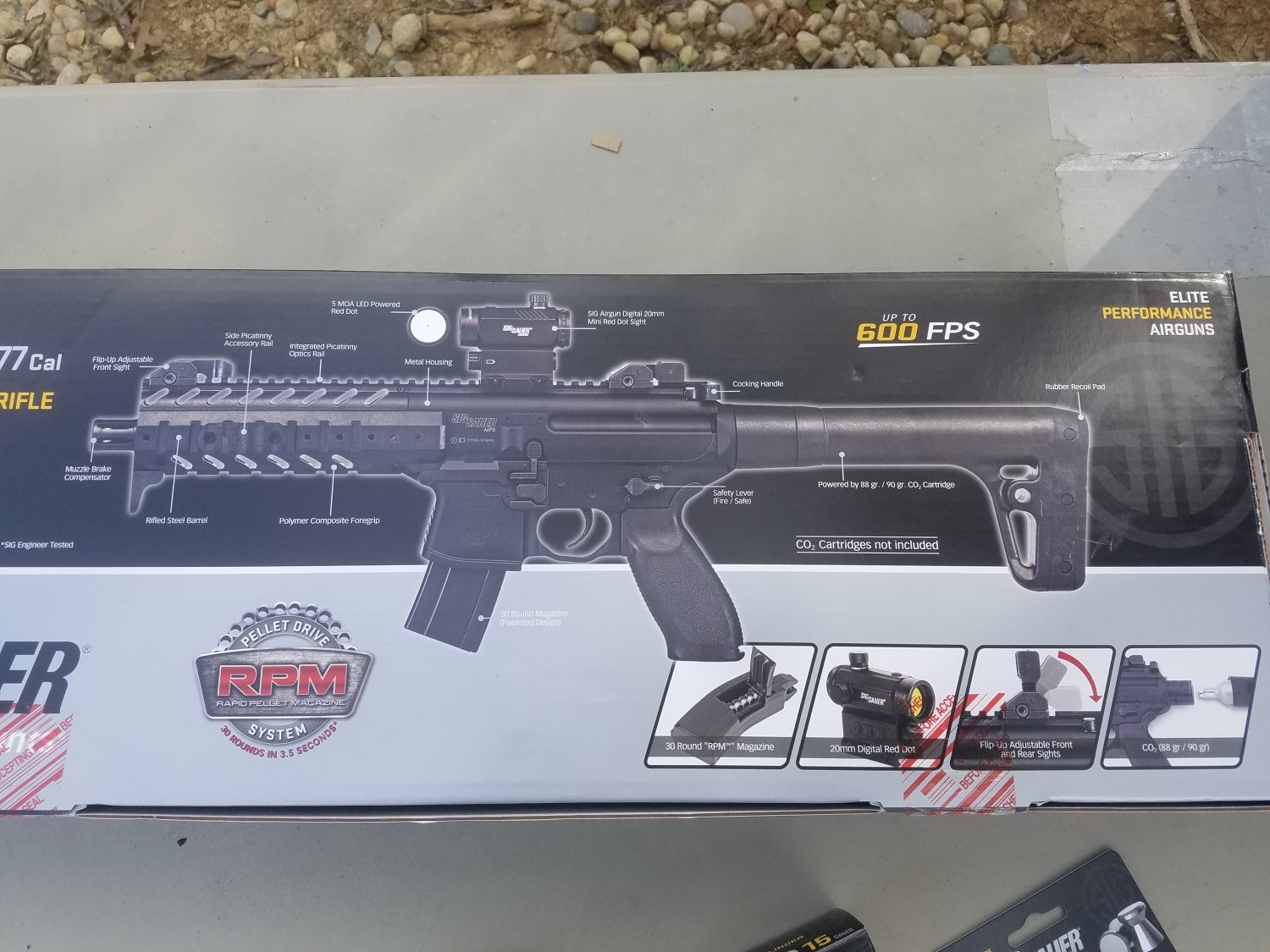
Rather than typically open the box at home, I opted to keep it for the range. I knew that if given the chance, I would set up those targets inside the house and not hear the end of it from the Mrs. As the range session would show, this was a good idea as the MPX was just a blast, if with a few annoyances.
- I’d say sights may be a hair low, but that is due to distance from my shooting. Easy to keep on target.
Getting the ASP out of the box was a simple affair. Graciously, the iron sights came pre-mounted (and pre-zero’d or I was lucky), but the red-dot was DOA. The cheap battery was dead, so I pulled a spare from the shooting bag, which turned it on bright and proud. Fortunately, it was adjustable brightness, which came in handy as the high brightness settings were washing out the optic. Turned down to tame levels, it was perfectly functional though I would not mount to anything one would stake their life on.

Fit and finish is… cheap by firearms standards but then again so is the ASP. Retail on the package as shipped to me is $279, red dot included. The weapon is a collection of injection molded and cast parts, which come together into an attractive package, but it’s worth noting that one can tell how Sig got the price down. For example, the black painted exterior does not go into the magazine well, where bare metal was exposed. Flashing lines and casting marks were apparent but did not detract from overall experience. I did notice the red dot was actually well-finished and looked the professional part.

The weapon feels hefty, as it is actually quite weighty, adding to the experience. Unlike a lot of other airguns which go lighter and feel cheaper than their firearm counterpart, the ASP goes the other route. It feels substantial. Adding in the CO2 tank to the buttstock, its actually more heft than its real-steel cousin and balances farther to the rear.
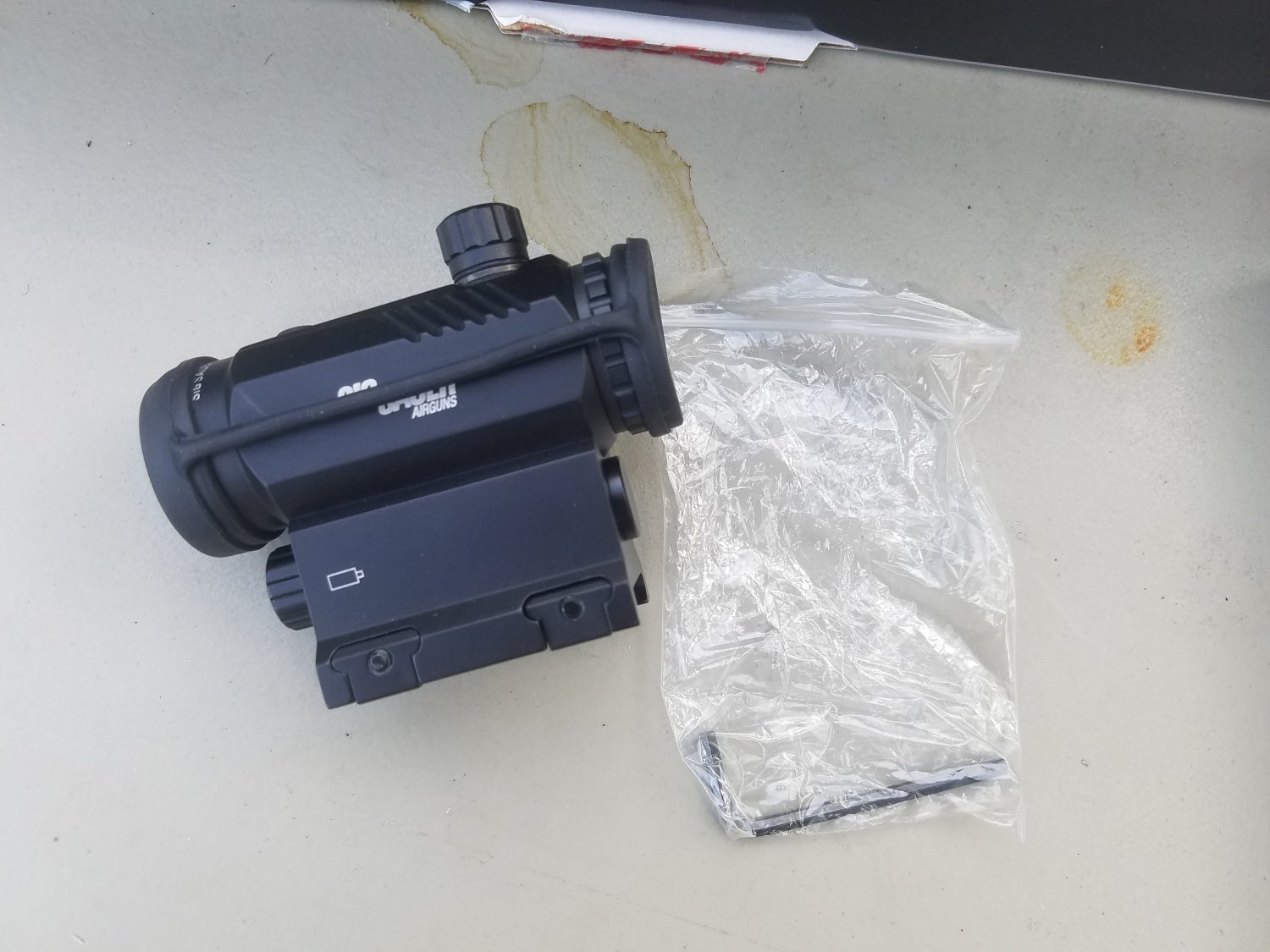
Shooting the MPX ASP
Getting the weapon ready at the range took some time. Used to loading up cartridges and going bang quickly, the prep on the ASP can be a bit more tedious. One has to prepare just just the ammunition, but the propellant as well. Fortunately, this is relatively simple. Remove the CO2 cannister from the box, insert into the stock, and tighten up. When you hear the air pop, the system is pressurized and ready for shooting.

The other component is the magazine, which needs to be stripped and loaded. Herein is the novel part of the MCX ASP, the “Roto Belt” mechanism. Most semi-autos use a cyllinder like a revolver but Sig took its firearms know-how and applied it to air rifles in a big way. The MCX ASP uses a belted feeding mechanism, a hybrid of our belt-fed automatics and double-action revolvers. Combined together, one has found semi-auto air rifle nirvana.

Loading the roto-belt is easy, but tedious. First, the belt has to be removed from the magazine body, accomplished by opening the magazine body window and pulling out the belt. Second, the belt is set down, muzzle end to the table and loaded. Each pellet has to be loaded manually and pressed into at least flush with the belt otherwise risk malfunction. Be careful not to miss a spot or it may seem like the weapon is empty (remember, no bolt hold-open). Finally, all loaded, the belt is routed back into the magazine and the door is shut.

With the air source on, the magazine is inserted into the well just like any other magazine and one then goes to town pulling the trigger until the sharp thwack of pellets going down the barrel turns to a dull thud indicating you are out of ammo and must reload the magazine, repeating steps one to three above. If anything, the fun got tedious again as I only had the single magazine. If you opt for this plinker, pick up a couple extra magazines, well worth it.
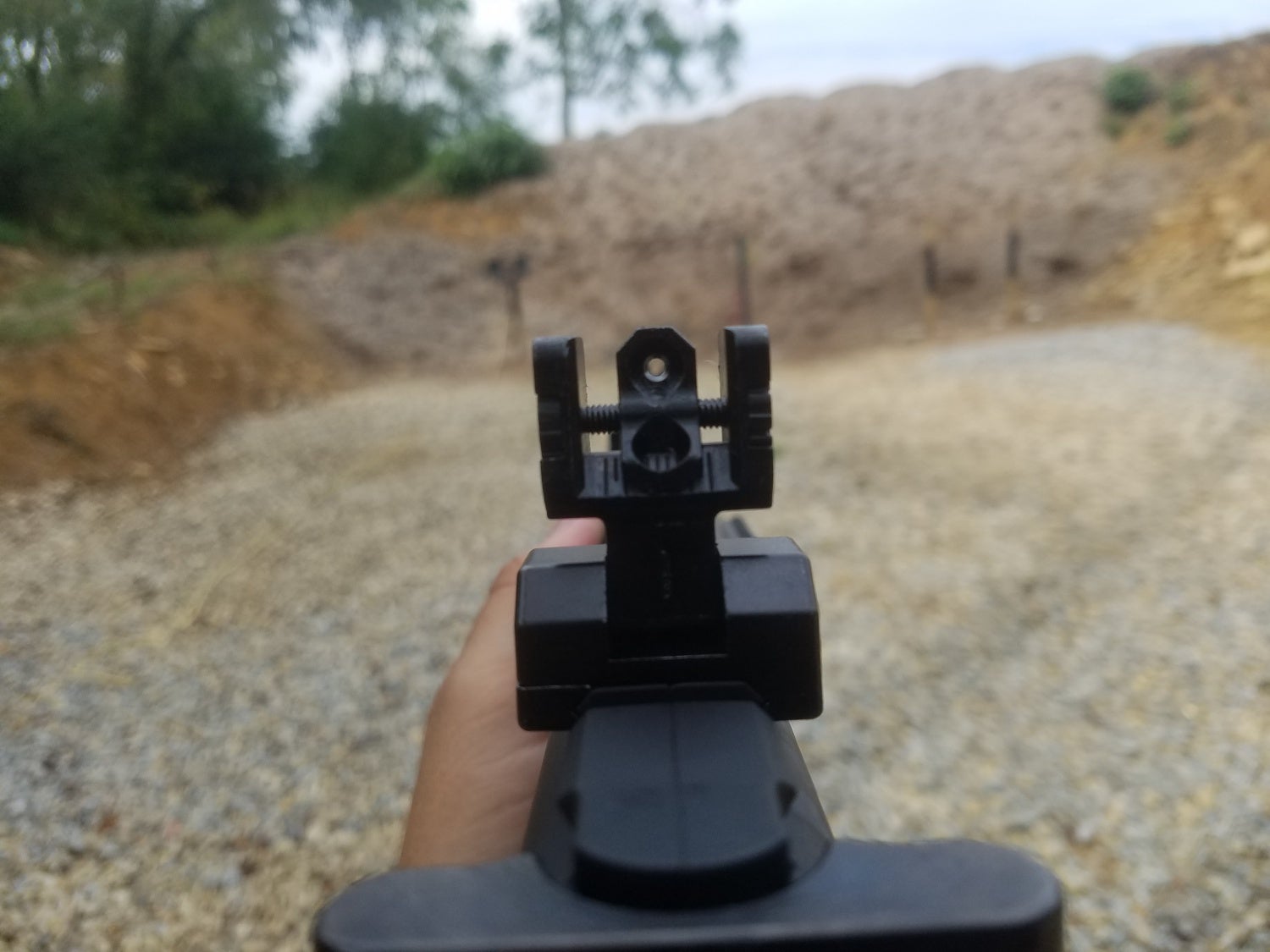
Recoil is truly honestly and completely nonexistent by any conventional standard. There is a louder report from the muzzle than any perceived motion of the air rifle. This makes sense, as the substantial weight, low velocity, and small pellets combine to a weapon that does not move. Disappointing for those who would want to train with the ASP, it makes the fun all the more fun, as at this point it relies on your trigger pulling to hit the targets.
Speaking of, the trigger pull is long and mushy. At almost a 1/2 inch of pull, its not what one would expect from the real-steel MCX but its important to understand what is going on with each pull. Your trigger finger is working the double-action mechanisms to align the belt and release the air with each shot. It takes mechanical distance to do that and considering the challenge and price of the air rifle, I would say the pull is “good.” In the MCX, one is only releasing a hammer with minute movement. The ASP has much more going on.
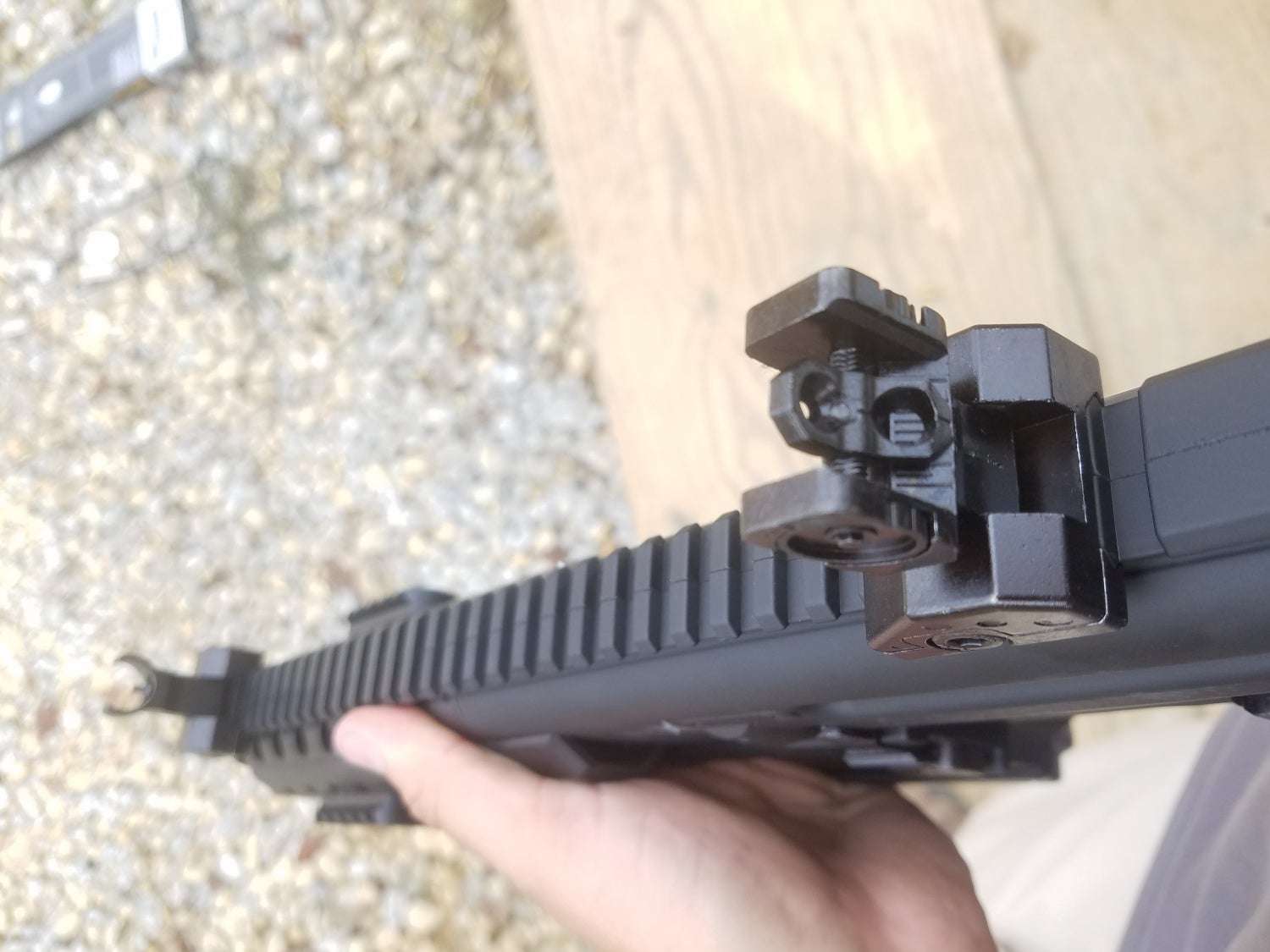
Once behind the airgun, the annoyance with the trigger disappears. With no recoil and little report, the only thing separating dead airgun targets is one’s ability to squeeze the trigger. With the iron sights, I was hitting 1″ x 2″ Sig targets 30 for 30 at 15 yards. In one magazine load, I eliminated the 9 point Texas Stary, hangers, and swingers. Not bad for an airgun trigger, which means the weapon is scary accurate for its short effective distances.
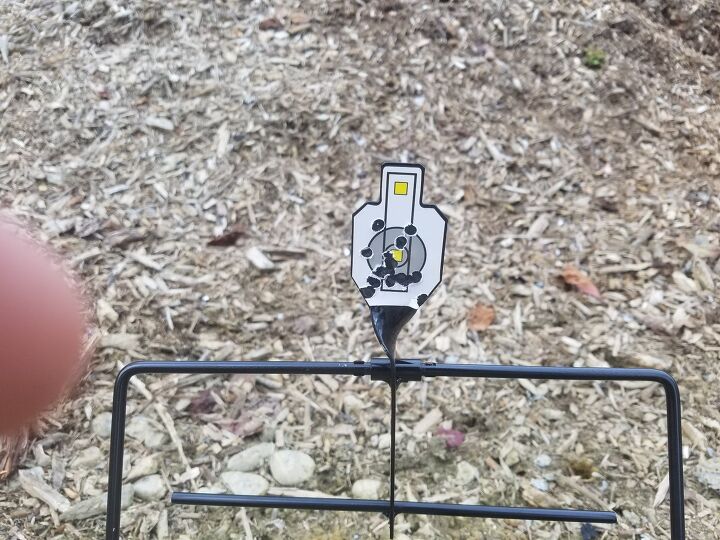
I’d say sights may be a hair low, but that is due to distance from my shooting. Easy to keep on target.
The large CO2 tanks last about 300 shots or 10 magazines without dry firing. Dry-firing the weapon is OK, but will waste extra gas, so I’d recommend keeping that to a minimum. My only complaint after the day’s shooting and 600 rounds was I needed more magazines to break up the loading process. If the extra mags were there, it would have gone from just plain fun, to a full-blown blast.
The Good:
- Semi-auto air rifles are hard to do well. Sig hit the very small nail on the head with this offering. The “roto-mag” is awesome.
- Included (at least on this model) are both iron sights and an electro-optic. Cool.
- By firearms standards, the trigger is mushy and long, by air rifle standards, plenty good especially considering its double action.
- Quite accurate with the Sig provided pellets. I always hit the 1″ x 2″ spinner targets at 25 yards with iron sights.
- $279 retail for the red dot version. Just $199 for the iron-sights only option.
The Notable:
- Externally representative, but not functionally representative.
- By firearms standards, the trigger is mushy and long, by air rifle standards, plenty good especially considering its double action.
- Those looking for firearms level fit and finish should look elsewhere. This is a cheap air-rifle, so expect commensurage level finishes.
The Bad:
- The red-dot optic battery was DOA. Make sure you have a spare battery.
- The larger C02 cartridges can be a pain to find in local stores, but seem to be making their way nationally in retail outlets.
Final Thoughts:
I came away in a love-hate relationship on the air rifle. I hated that it was not quite a firearm in terms of full functionality, but loved the idea and execution behind the semi-auto system. As a firearm, the MPX ASP Red Dot simply did not measure up to our beloved rimfires, but as an air rifle, it stands apart.
So that’s just it – one has to look at this air rifle as just that, an air rifle. If you look at it from the lens of the firearm that gives it its shape, you will be disappointed, if only because the MPX is so darn good.
At 575 FPS, the MPX ASP is not quite a varminter, but it is a sure-as-dickens fun plinker. With 30 rounds at your semi-auto disposal, pulling the trigger fast is just plain easy and entertaining. As such, when purchased and used for that purpose, it’s a grin-inducing airgun.
 Your Privacy Choices
Your Privacy Choices






